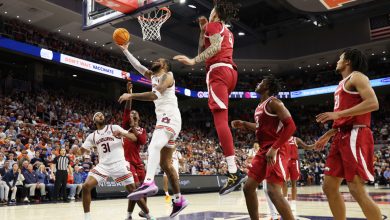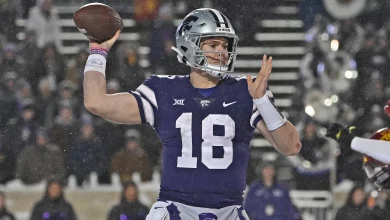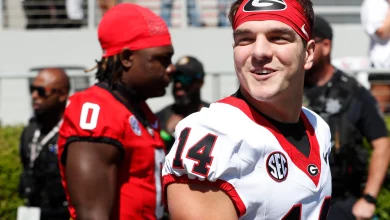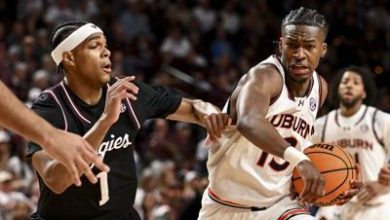Could Vikings tag-and-trade Byron Murphy Jr. like Chiefs did with L’Jarius Sneed?
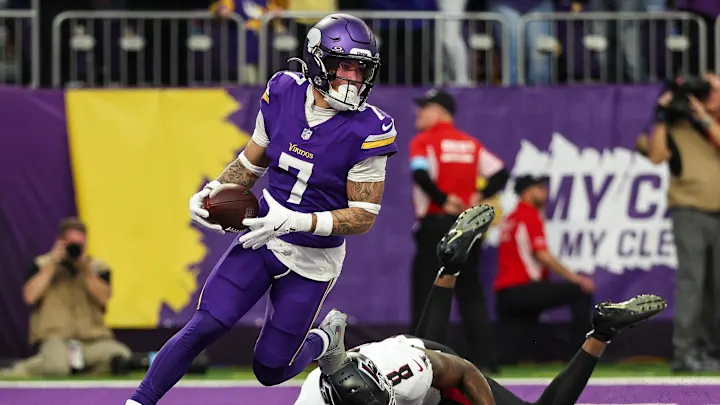
In the world of the National Football League (NFL), the offseason is often as much about strategy, negotiation, and roster management as the regular season itself. Teams use this period to reshape their rosters, make difficult decisions, and look for opportunities to improve through trades, signings, and the NFL Draft. One recent development that caught the attention of many was the Kansas City Chiefs’ use of the tag-and-trade strategy with cornerback L’Jarius Sneed, which led to a new approach for teams looking to get value out of players on the franchise tag. This brings us to a question many are now asking: could the Minnesota Vikings use a similar strategy with their cornerback, Byron Murphy Jr., and tag-and-trade him like the Chiefs did with Sneed?
In this article, we will explore the concept of tag-and-trade, examine whether it’s a viable strategy for the Vikings in Murphy’s case, and analyze the specific factors that would make such a move feasible. We will also look at Byron Murphy Jr.’s situation, the Vikings’ current roster needs, and the broader NFL trends that influence such decisions. Ultimately, we will assess the pros and cons of such a move and weigh whether it makes sense for both the Vikings and Murphy in 2024.
What is a Tag-and-Trade?
Before diving into the specifics of Byron Murphy Jr. and whether a tag-and-trade is a feasible move for him, it is important to understand what a tag-and-trade entails in the NFL.
The franchise tag is a tool used by NFL teams to retain a player for one year while negotiating a long-term contract. A player tagged with the franchise tag is typically paid a salary based on the average of the top five players at his position, or 120% of his previous year’s salary, whichever is greater. The tag allows a team to hold onto a player who is either an impending free agent or someone they want to ensure stays with the team for at least one more season.
The tag-and-trade strategy is a move where a team uses the franchise tag to retain the rights to a player for a year but then trades the player to another team before the season begins. This strategy is often used to extract more value from a player when the original team can no longer afford or does not wish to negotiate a long-term deal, or when the team feels it can maximize trade value while keeping the player under contract for the immediate future.
In recent years, the franchise tag and trade strategy have become more prominent, with the L’Jarius Sneed trade from the Kansas City Chiefs in 2024 serving as an example. The Chiefs tagged Sneed but opted to trade him to the Chicago Bears for a considerable return, allowing the Chiefs to gain assets while freeing up space for future moves. This trade has become a template for other teams looking to capitalize on their franchise-tagged players’ value without the burden of long-term commitment.
Byron Murphy Jr.: A Key Piece for the Vikings
Byron Murphy Jr. is a cornerback who joined the Minnesota Vikings in 2023 on a two-year deal after spending his first four seasons with the Arizona Cardinals. Murphy had established himself as a solid cornerback in Arizona, known for his physicality, intelligence, and ability to play in various defensive schemes. At 26 years old, Murphy is entering the prime of his career, and his combination of size, speed, and coverage skills make him a valuable asset for any team.
During his first season with the Vikings, Murphy made an immediate impact. The Vikings’ secondary, which was one of the weaker points on their defense in 2022, showed significant improvement with Murphy at cornerback. His presence allowed the Vikings’ defensive unit to play with more confidence, as he provided a steady presence on the outside and allowed them to deploy different coverages without worrying about a hole in the cornerback position.
However, despite his solid performance, the Vikings are entering a pivotal offseason, where they need to make tough decisions regarding the structure of their roster and future salary cap. With several significant contracts already on the books, Minnesota is in a position where they may need to consider the possibility of parting ways with certain players, including Murphy, either by letting him go in free agency or by making him available for trade.
This leads us to the question of whether the Vikings could use the franchise tag to retain Murphy’s rights for one more year and then trade him to another team. Given his status as a starting cornerback with significant potential, Murphy would likely garner interest from several teams looking to bolster their defensive backfield. By using the franchise tag and trading him, the Vikings could potentially extract value from Murphy while also freeing up cap space for other roster moves.
Why Tag-and-Trade Could Make Sense for the Vikings
1. Retention of Value
The most obvious reason for the Vikings to consider a tag-and-trade scenario with Byron Murphy Jr. is the ability to retain value for a player who could be a key part of their defense moving forward. If Murphy is due for a larger contract extension, the Vikings may not be in a position to sign him to a long-term deal. However, by tagging him and trading him to a team that is willing to sign him to a lucrative contract, Minnesota could secure additional draft capital or young players in return. This approach allows the Vikings to make the most of Murphy’s value without committing to a long-term deal that could be difficult to manage financially.
2. Salary Cap Flexibility
The Vikings’ financial situation in 2024 is one where salary cap flexibility is important. With several high-profile players already locked into significant contracts, Minnesota will need to get creative with its roster management. Tagging Murphy would allow the Vikings to keep him on the roster for another season without committing to a long-term contract. If the team decides that Murphy is expendable or that they can’t afford his next contract, they can look to trade him to another team for value while maintaining some cap flexibility for other moves, such as signing free agents or extending contracts for core players.
3. Teams Needing a Cornerback Upgrade
The NFL is always in search of top-tier cornerbacks, as defenses continue to evolve and pass-heavy offenses dominate the league. Cornerbacks like Byron Murphy, who can perform at a high level on the outside and in zone coverage, are highly coveted by teams that need a reliable starter. Teams such as the New England Patriots, New York Giants, and the Detroit Lions, who are in need of defensive upgrades, could be interested in acquiring Murphy through a trade. By using the franchise tag and working out a trade, the Vikings could set themselves up for a successful deal that addresses both their cap situation and roster needs.
4. Future Draft Capital and Rebuilding
For the Vikings, accumulating draft picks is always a priority, especially when considering the team’s long-term development. By trading Murphy for draft picks, the Vikings could bolster their future while continuing to develop their roster. This could be especially appealing for a team that might be in a transitional phase, looking to reload for the future while remaining competitive in the short term.
Potential Risks of Tag-and-Trade for the Vikings
While the tag-and-trade strategy may offer the Vikings certain advantages, there are also some risks associated with this approach.
1. Murphy’s Long-Term Commitment
If the Vikings were to tag Murphy, it is important to consider the potential implications of keeping him on the roster for just one more year without a long-term commitment. If they were unable to trade him or if the trade market for Murphy were not as strong as anticipated, the Vikings could be stuck with a high-priced player for another season without a clear path to extending him. This could create complications for the team’s financial flexibility and long-term planning.
2. Team Chemistry and Locker Room Dynamics
One of the less-discussed factors of a tag-and-trade situation is the potential impact on the player’s relationship with the team. While players are professionals and understand the nature of the business, there could still be some fallout from a trade, particularly if a player feels that the team does not value him enough to make a long-term commitment. This could lead to a disruption in locker room chemistry, especially if Murphy has become a key leader on the defense. The Vikings would need to carefully weigh this dynamic when making such a decision.
3. Trade Market Uncertainty
Finally, the Vikings would need to consider the trade market for Murphy. While he is a talented cornerback, the demand for him in the trade market may not be as high as they hope. Other teams may be hesitant to trade for a player they know will cost a significant amount of money under the franchise tag. Additionally, Murphy’s recent injury history may be a concern for potential suitors, further complicating the trade process



